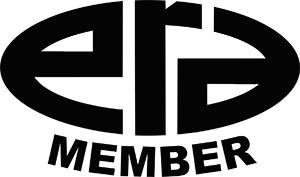Graphic overlays, often called membrane switches or control panels, seem like plastic sheets at first glance. However, beneath their seemingly unassuming exterior lies a world of functionality and versatility. These thin layers serve many purposes, such as raising the user experience, protecting delicate components, and establishing a product’s brand identity.
Read on to understand the various applications of graphic overlays.
The Purposes of Graphic Overlays
Graphic overlay technology has evolved with advanced techniques like laser marking, digital printing, and anodizing. These methods enable precise customization and durability, meeting performance requirements while offering aesthetic appeal in the following ways:
Visual Branding
Graphic overlays are effective for brand promotion. Customizable with a company’s name, logo, and other branding elements, they improve the product’s visual appeal and reinforce brand identity.
User Interaction
Graphic overlays are often the primary interface for user interaction, covering control panels and indicating the function of each button. Without these overlays, users would find it challenging to operate the device.
Company Logos and Colors
Overlays prominently display company logos and incorporate brand-specific colors, reinforcing brand recognition and creating a consistent visual identity.
Backdrop Illumination
Graphic overlays can be designed for backlit illumination. This technique uses lighting underneath the overlay to highlight specific symbols, making them more noticeable. Backdrop illumination, often achieved with LED lighting, indicates functionalities such as on/off buttons and directions. This means better visibility and usability, especially in low-light conditions.
Tactile Feedback
Incorporating tactile feedback into graphic overlays improves user safety by providing a physical response when a button is pressed. This feedback reassures users that their input has been registered, reducing the likelihood of repeated presses or accidental activations.
Dead Fronting
Dead fronting is a technique where symbols are hidden until needed, commonly seen on car dashboards with indicators like low tire pressure or check engine lights. Graphic overlays can be customized to include dead fronting, allowing symbols to remain hidden until necessary.
Applications of Graphics Overlays
They are versatile components used across various industries for their durability, functionality, and aesthetic appeal. Let’s explore how graphic overlays are used in various fields:
Industry Applications
Depending on the material, graphic overlays can resist specific chemicals, making them ideal for use in laboratories, manufacturing plants, or cleaning equipment.
Medical Devices
Overlays designed for medical equipment can be sterilized and provide precise touch sensitivity, making them suitable for medical interfaces.
Consumer Electronics
Keyboards, remotes, and other consumer electronics use overlays for durability, user comfort, and aesthetic appeal.
Appliance Control Panels
Overlays offer a sleek and intuitive way to interact with washing machines, refrigerators, and other appliances.
Marine Applications
Marine equipment will face harsh conditions like saltwater. Overlays made from durable materials like etched nameplates and polycarbonate labels endure these conditions, ensuring they remain visible and functional over time.
Final Words
Graphic overlays’ versatility and functionality continue to redefine standards in usability, durability, and aesthetic appeal across global industries. As technology continues to advance and applications diversify, overlays remain crucial components. They adapt to meet evolving demands and set new benchmarks in performance and reliability.
If you want to benefit from graphics overlay’s visual aesthetics and functionality, our team at King Epoxy Emblem Co., Ltd can help. Contact us now to learn more.


